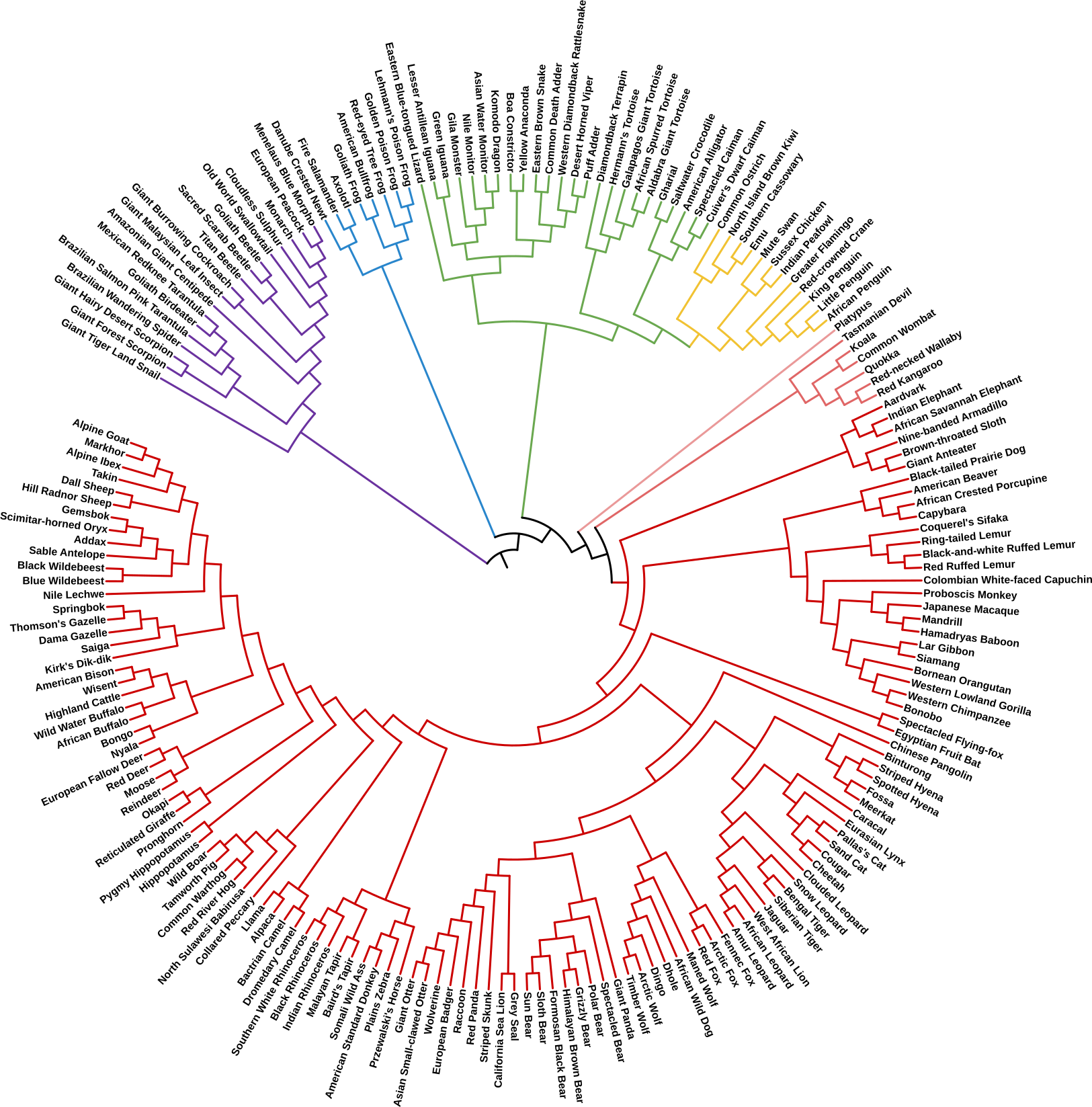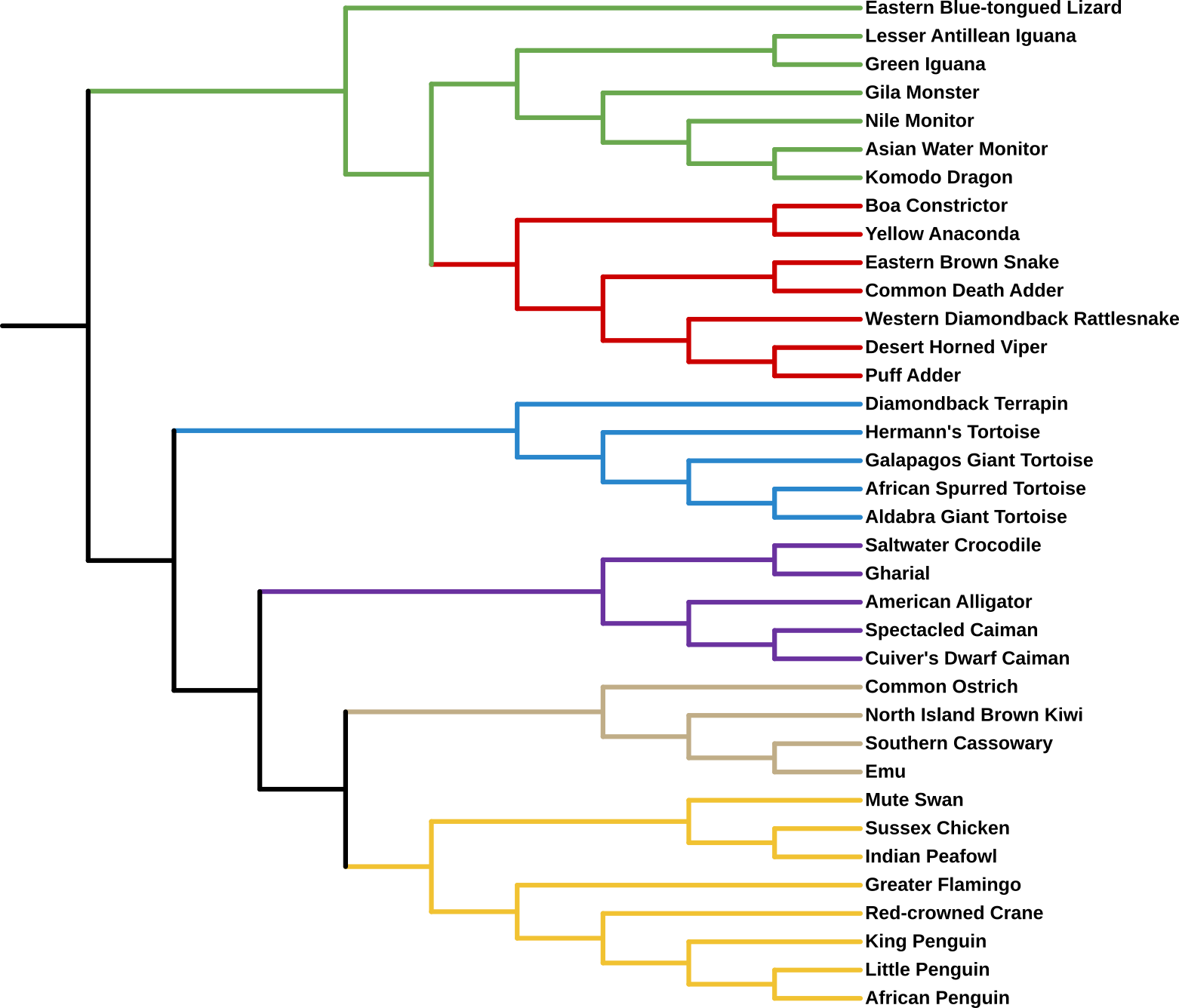Due to a combination of hype for the upcoming DLC and procrastination, I decided to spend tonight putting together an evolutionary tree of Planet Zoo's entire roster (as one does). The result is below:
To make it a bit easier to understand, I've also broken the tree down into smaller categories:
God we need more birds.
Additionally, here is a tree of species from the base game for the sake of comparion:

Purple for invertebrates, blue for amphibians, green for (non-avian) reptiles, yellow for birds and red for mammals
Mostly just made this out of boredom, but I hope some of you find it interesting. Will likely update it with future additions.
Planet Zoo's Tree of Life

Purple for invertebrates, blue for amphibians, green for (non-avian) reptiles, yellow for birds and red for mammals (varying from light to dark red between monotremes, marsupials and placentals)

Purple for invertebrates, blue for amphibians, green for (non-avian) reptiles, yellow for birds and red for mammals (varying from light to dark red between monotremes, marsupials and placentals)
To make it a bit easier to understand, I've also broken the tree down into smaller categories:
Invertebrates

Blue for molluscs, red for myriapods, green for insects and purple for arachnids

Blue for molluscs, red for myriapods, green for insects and purple for arachnids
Amphibians

Yellow for caudatans and green for frogs

Yellow for caudatans and green for frogs
Reptiles

Green for lizards, red for snakes, blue for turtles, purple for crocodilians, brown for palaeognath birds and yellow for neognath birds

Green for lizards, red for snakes, blue for turtles, purple for crocodilians, brown for palaeognath birds and yellow for neognath birds
Mammals

Purple for monotremes, orange for marsupials, green for xenarthrans, grey for afrotheres, yellow for rodents, magenta for primates, blue for bats, brown for ungulates and red for ferans
NOTE: The timber wolf here is classed as Canis lupus occidentalis for simplicity's sake

Purple for monotremes, orange for marsupials, green for xenarthrans, grey for afrotheres, yellow for rodents, magenta for primates, blue for bats, brown for ungulates and red for ferans
NOTE: The timber wolf here is classed as Canis lupus occidentalis for simplicity's sake
God we need more birds.
Additionally, here is a tree of species from the base game for the sake of comparion:

Purple for invertebrates, blue for amphibians, green for (non-avian) reptiles, yellow for birds and red for mammals
Mostly just made this out of boredom, but I hope some of you find it interesting. Will likely update it with future additions.
Last edited:


